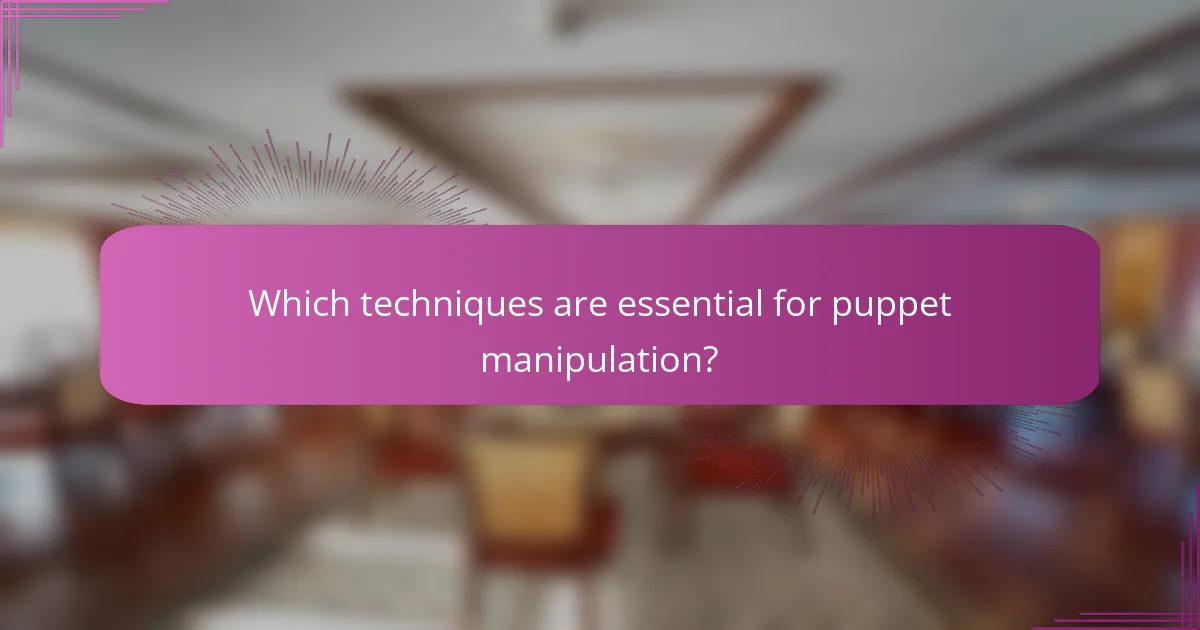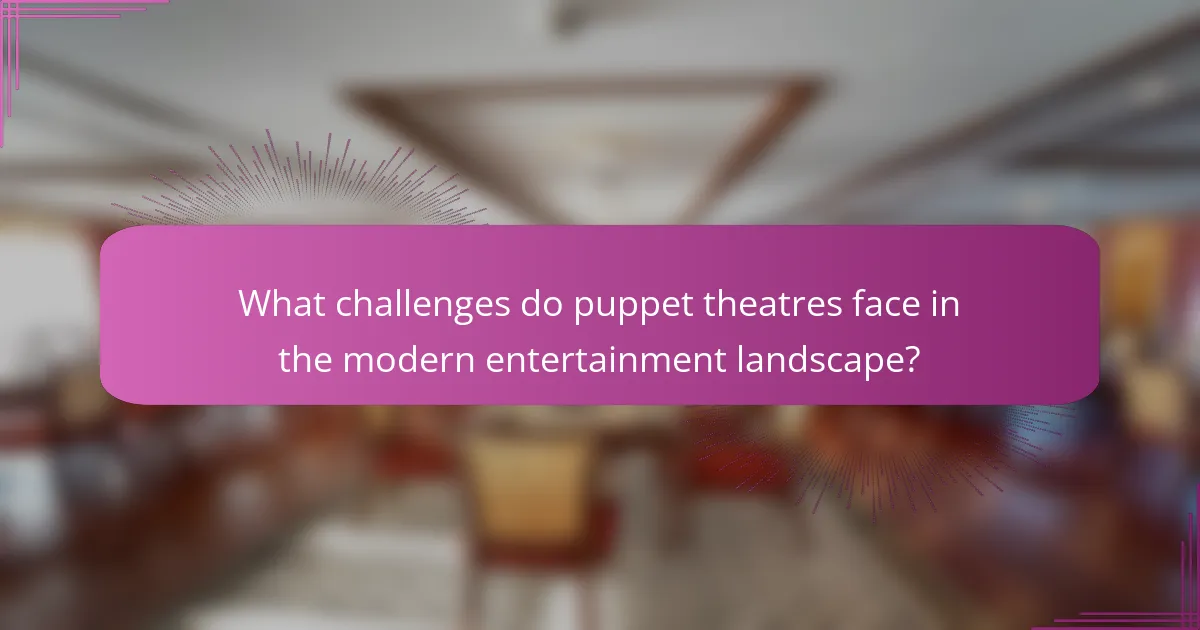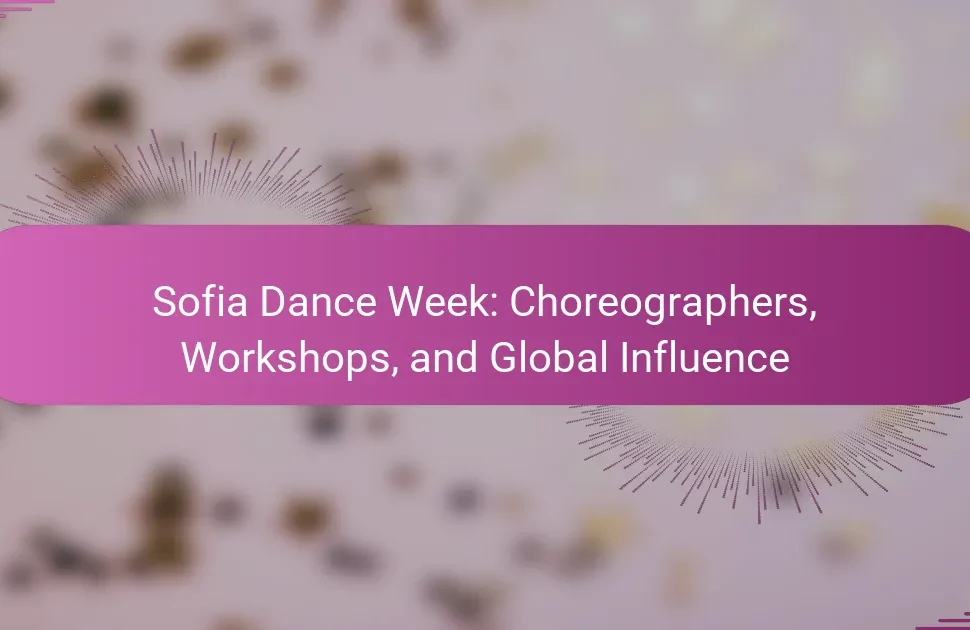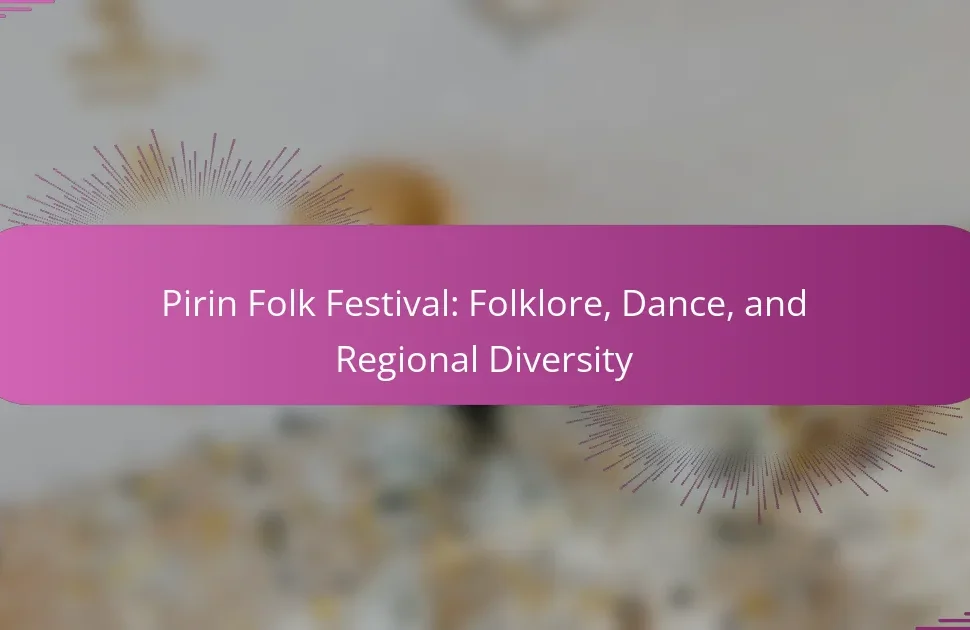The International Festival of Puppet Theatres offers an immersive experience that combines artistry, innovative techniques, and audience engagement. Key artistic elements include manipulation skills, character design, and captivating storytelling. The festival showcases diverse puppet styles and emphasizes cultural exchange, while interactive workshops enhance audience participation. Challenges in the modern entertainment landscape necessitate creative approaches to attract and engage viewers effectively.

What are the key artistic elements of puppet theatre performances?
Key artistic elements of puppet theatre performances include manipulation techniques, character design, storytelling, and audience interaction. These elements create a rich, immersive experience. Manipulation techniques vary, showcasing the puppeteer’s skill. Character design involves unique attributes that bring characters to life, while storytelling engages audiences through captivating narratives. Audience interaction enhances the performance, making it a participatory experience.
How do different cultures influence puppet design and storytelling?
Different cultures significantly shape puppet design and storytelling through unique artistic styles and narrative traditions. For instance, Asian puppetry often emphasizes intricate movements and symbolic representations, while Western puppetry may focus on character-driven narratives and humor. Regional materials and techniques further influence the aesthetics and functionality of puppets. Cultural festivals showcase these diverse approaches, engaging audiences with rich storytelling and interactive experiences that reflect local heritage.
What role does music play in enhancing puppet theatre?
Music enhances puppet theatre by creating emotional depth, setting the tone, and engaging the audience. It complements visual storytelling, amplifying character emotions and actions. For example, live music can adapt to the performance’s rhythm, enriching the overall experience. Studies show that soundtracks can increase audience retention and engagement, making performances more memorable. The unique synergy between music and puppetry elevates artistic expression, fostering a deeper connection with viewers.

Which techniques are essential for puppet manipulation?
Essential techniques for puppet manipulation include control of movement, timing, and emotional expression. Mastery of these techniques enhances audience engagement and storytelling. Manipulators utilize various methods such as string pulling, hand control, and body mechanics to bring puppets to life. These skills require practice and an understanding of the puppet’s design to achieve realistic performances.
How do puppeteers develop their skills and techniques?
Puppeteers develop their skills through practice, observation, and training. They attend workshops and festivals, such as the International Festival of Puppet Theatres, to learn various techniques and artistry. Engaging with experienced puppeteers enhances their understanding of audience interaction and performance dynamics. Regularly experimenting with different puppetry styles and materials fosters creativity and adaptability in their craft.
What are the differences between traditional and contemporary puppet manipulation?
Traditional puppet manipulation relies on physical strings and rods, while contemporary techniques often incorporate technology and multimedia. Traditional forms emphasize craftsmanship and storytelling, whereas contemporary methods focus on innovation and audience interaction. Traditional puppetry maintains cultural heritage, while contemporary styles often challenge artistic boundaries. The International Festival of Puppet Theatres showcases both styles, highlighting their unique attributes and audience engagement strategies.

How do puppet festivals engage and attract audiences?
Puppet festivals engage and attract audiences through immersive storytelling, interactive performances, and diverse artistic techniques. These elements create a captivating atmosphere that fosters emotional connections.
The International Festival of Puppet Theatres showcases various puppet styles, enhancing audience appreciation for the artistry involved. Workshops and demonstrations offer attendees hands-on experiences, deepening their engagement.
Unique attributes, such as the incorporation of local cultural themes, resonate with audiences, making performances more relatable. Festivals often feature renowned puppeteers, increasing their appeal and drawing larger crowds.
As a result, these festivals not only entertain but also educate, cultivating a broader understanding of puppet theatre as a significant art form.
What marketing strategies are effective for promoting puppet festivals?
Effective marketing strategies for promoting puppet festivals include social media campaigns, partnerships with local schools, and engaging with community organizations. These methods enhance visibility and foster audience participation.
Utilizing visually appealing content on platforms like Instagram and Facebook can attract a wider audience. Additionally, organizing workshops or interactive sessions in schools can introduce puppetry to younger demographics, increasing future attendance.
Collaboration with local theaters and art organizations can create cross-promotional opportunities, expanding reach. Offering early bird ticket discounts or family packages can incentivize attendance and boost ticket sales.
Engaging storytelling through newsletters and blogs about puppet artistry can deepen audience connection and interest, showcasing the unique attributes of the festival.
How do audience demographics influence festival programming?
Audience demographics significantly shape festival programming by influencing content selection and engagement strategies. Festivals like the International Festival of Puppet Theatres tailor performances to match the interests and cultural backgrounds of attendees. For example, younger audiences may prefer innovative techniques and interactive experiences, while older demographics might appreciate traditional storytelling methods.
Understanding audience preferences allows organizers to enhance participation and satisfaction. Festivals often analyze demographic data to curate diverse programming that appeals to various age groups, cultural identities, and interests. This targeted approach fosters community engagement and broadens the festival’s reach.
Additionally, demographic insights inform marketing strategies, ensuring promotional efforts resonate with specific audience segments. By aligning programming with audience demographics, festivals can create inclusive environments that celebrate artistic expression and foster connection among diverse groups.

What are the unique features of the International Festival of Puppet Theatres?
The International Festival of Puppet Theatres showcases unique features that enhance artistry and audience engagement. It features diverse puppet techniques, including shadow puppetry and marionettes, appealing to various age groups. The festival emphasizes cultural exchange, inviting international troupes to share their unique styles and stories. Interactive workshops engage audiences, allowing them to experience puppet-making and performance firsthand. The festival also incorporates innovative technology, such as augmented reality, enriching the storytelling experience. Each of these aspects contributes to a vibrant atmosphere that celebrates the art of puppetry.
Which renowned puppeteers and companies participate in the festival?
Renowned puppeteers and companies participating in the International Festival of Puppet Theatres include notable figures from various countries. These include the acclaimed Handspring Puppet Company from South Africa, known for their innovative techniques and storytelling. The renowned Bunrakuza from Japan showcases traditional Bunraku puppetry, emphasizing intricate craftsmanship. Other participants include the acclaimed Teatro Gioco Vita from Italy, recognized for their engaging performances that blend puppetry with live music. The festival also features the esteemed Compagnie des Petits Champs from France, celebrated for their unique visual style and thematic depth. Additionally, local talents and emerging companies contribute to the festival’s diverse offerings, enriching the cultural experience.
How does the festival incorporate regional puppet traditions?
The festival incorporates regional puppet traditions by showcasing diverse styles and techniques from various cultures. Each performance highlights unique storytelling methods, materials, and puppetry forms, enriching the festival’s artistic tapestry. Regional artists often participate, providing authentic representations and fostering cultural exchange. Additionally, workshops allow attendees to engage with these traditions, enhancing audience appreciation and understanding.

What challenges do puppet theatres face in the modern entertainment landscape?
Puppet theatres face significant challenges in the modern entertainment landscape, including competition from digital media and changing audience preferences. The rise of streaming services has shifted attention away from traditional performances, making it harder for puppet theatres to attract audiences. Additionally, funding and resources remain limited, impacting production quality and outreach efforts. Engaging younger audiences is increasingly difficult, as they often favor more interactive and visually stimulating forms of entertainment. Balancing artistic integrity with commercial viability is another ongoing struggle for these theatres.
How do financial constraints impact puppet theatre productions?
Financial constraints significantly limit puppet theatre productions by restricting budgets for materials, talent, and venues. These limitations can reduce artistic quality and innovation, impacting audience engagement. Festivals like the International Festival of Puppet Theatres often rely on sponsorships and grants to mitigate these financial challenges, allowing for diverse performances and broader audience reach. Consequently, financial health directly influences the vibrancy and sustainability of puppet theatre artistry.
What are the common misconceptions about puppet theatre?
Common misconceptions about puppet theatre include the belief that it is solely for children, that it lacks artistic merit, and that puppetry is a simple form of entertainment. Many adults overlook the complexity and depth of themes explored in puppet theatre, which can address serious social issues. Additionally, some assume that puppetry requires minimal skill, disregarding the intricate techniques and artistry involved in crafting puppets and performances. This art form engages diverse audiences, proving its versatility and cultural significance.

What are the best practices for enhancing audience interaction during performances?
To enhance audience interaction during performances, incorporate immersive storytelling, interactive elements, and audience participation. These practices foster engagement and emotional connections.
Utilizing technology, such as live polls or augmented reality, can also elevate the experience. This approach encourages active involvement and feedback, making the audience feel integral to the performance.
Additionally, varying performance styles and incorporating diverse cultural elements can attract wider audiences and maintain interest. Tailoring content to resonate with specific demographics further enhances interaction.
Finally, post-performance discussions or Q&A sessions can deepen the audience’s understanding and appreciation, creating a lasting impact.
How can technology be used to create immersive puppet theatre experiences?
Technology can enhance puppet theatre by integrating virtual reality, augmented reality, and interactive elements. These innovations create immersive experiences that engage audiences on multiple sensory levels. For instance, VR can transport viewers into the puppet’s world, while AR can add digital layers to live performances. Interactive apps allow audiences to influence the storyline, fostering deeper connections. This blend of artistry and technology elevates traditional puppet theatre, making it more relevant and captivating in modern entertainment.
What feedback mechanisms can improve future performances?
Feedback mechanisms that enhance performances at the International Festival of Puppet Theatres include audience surveys, artist reflections, and peer reviews. These methods provide insights into audience engagement and artistic techniques.
Audience surveys can quantify satisfaction levels and preferences, helping organizers tailor future programming. Artist reflections foster self-assessment, encouraging performers to identify strengths and areas for improvement. Peer reviews promote collaboration and constructive criticism, enhancing overall artistry.
Implementing these feedback mechanisms creates a loop of continuous improvement, ensuring the festival evolves with audience expectations and artistic trends.




